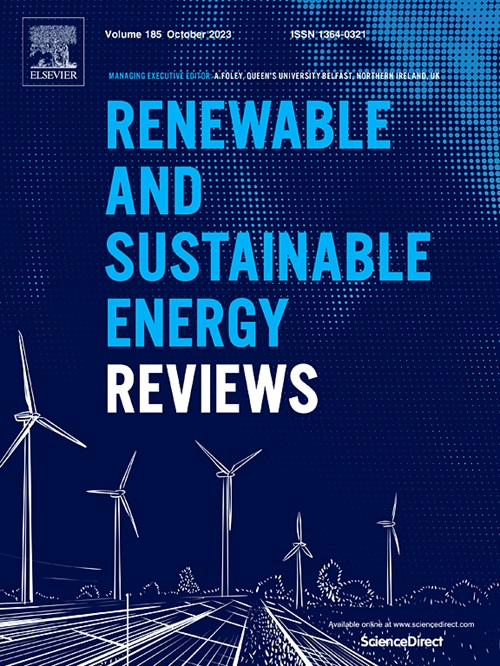Prospect of green hydrogen in Malaysian iron and steel industry: Techno-economic assessment and energy modelling using PyPSA-Earth
IF 16.3
1区 工程技术
Q1 ENERGY & FUELS
引用次数: 0
Abstract
The iron and steel sector stands as a significant contributor to greenhouse gas (GHG) emissions, and highly challenging for deep decarbonization. Although green hydrogen and renewable energy emerge as a promising solution, comprehensive infrastructure and system analyses are required to evaluate the feasibility. This study proposes a methodology to assess green hydrogen deployment for both primary (hydrogen as a reducing agent) and secondary (hydrogen as a combustion fuel) iron and steel production in Malaysia. PyPSA-Earth energy modeling tool has been employed to estimate the solar potential of Malaysia and the Levelized Cost of Electricity (LCOE). With an investment cost of $847.44/kW and an LCOE of RM22.5–26.6/kWe. The study compares centralized and decentralized hydrogen generation scenarios. The assessment suggested that full hydrogen adoption requires 38–39 TWh/year of renewable electricity which translates to 758.85 thousand tonnes of hydrogen annually. The estimated cost of solar farms, electrolyzers, and hydrogen transportation totals $63–64 billion for 100 % decarbonization and $36–37 billion for the primary sector alone (excluding retrofitting cost). Infrastructure costs in a decentralized scenario amount to $22–23 billion for both sectors and $12–13 billion for the primary sector alone. This comprehensive analysis provides valuable insights into the preliminary cost estimations in transformation of Malaysia's iron and steel industry into a more sustainable sector, and can be scaled up to any region worldwide.
求助全文
约1分钟内获得全文
求助全文
来源期刊

Renewable and Sustainable Energy Reviews
工程技术-能源与燃料
CiteScore
31.20
自引率
5.70%
发文量
1055
审稿时长
62 days
期刊介绍:
The mission of Renewable and Sustainable Energy Reviews is to disseminate the most compelling and pertinent critical insights in renewable and sustainable energy, fostering collaboration among the research community, private sector, and policy and decision makers. The journal aims to exchange challenges, solutions, innovative concepts, and technologies, contributing to sustainable development, the transition to a low-carbon future, and the attainment of emissions targets outlined by the United Nations Framework Convention on Climate Change.
Renewable and Sustainable Energy Reviews publishes a diverse range of content, including review papers, original research, case studies, and analyses of new technologies, all featuring a substantial review component such as critique, comparison, or analysis. Introducing a distinctive paper type, Expert Insights, the journal presents commissioned mini-reviews authored by field leaders, addressing topics of significant interest. Case studies undergo consideration only if they showcase the work's applicability to other regions or contribute valuable insights to the broader field of renewable and sustainable energy. Notably, a bibliographic or literature review lacking critical analysis is deemed unsuitable for publication.
 求助内容:
求助内容: 应助结果提醒方式:
应助结果提醒方式:


